A WOOD FRAME DEATH SENTENCE (1914)
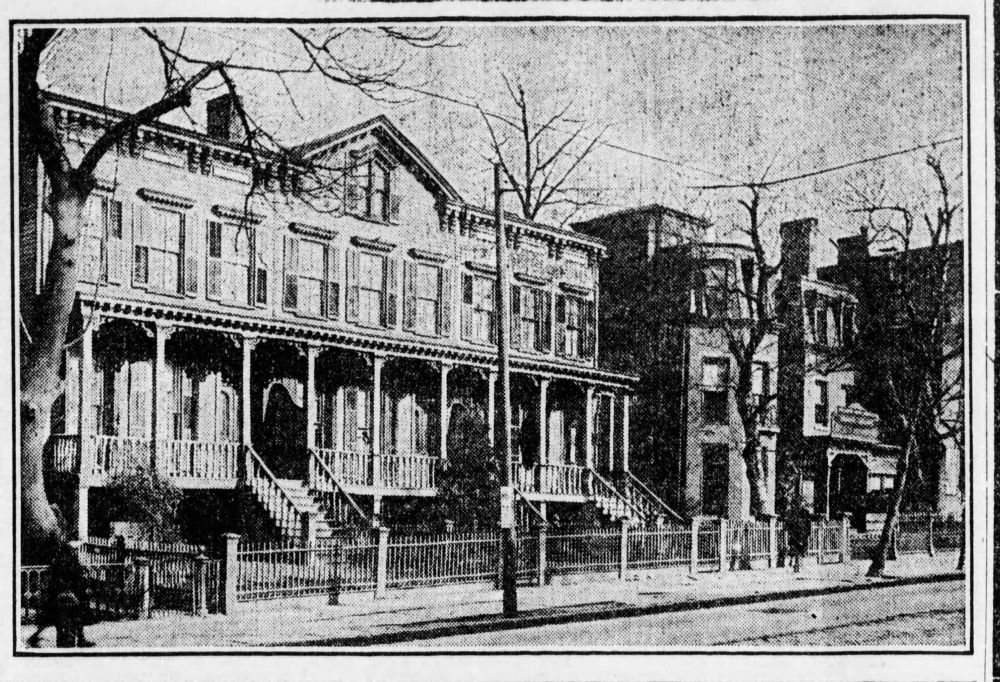
Brownstone Detectives investigates the history of our clients’ homes.
The story you are about to read was composed from research conducted in the course of one of those investigations.
Do you know the history of YOUR house?
********************************************************************************************************************************
Wood frame dwellings were once the norm in Brooklyn.
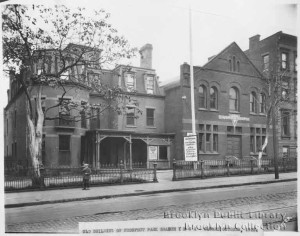
Before a series of laws were enacted in the mid-1800s remanding that houses be constructed of “non-flammable” materials, houses had generally been made of wood.
And wooden houses existed everywhere because they were simple to build, cheap in their construction and costs of materials, and their primary element – wood – was everywhere available.
As “non-flammable” construction – mostly brick and brownstone – became the norm throughout the borough, these old structures were systematically torn down and replaced with the newer buildings.
So, today, when you see a wooden house anywhere in Brooklyn – esp. closer to the city center – you are seeing a rare commodity, as what’s left of these structures is being torn down all around us by developers planning who are building larger and higher-occupancy buildings in their place.
Back in 1914, though, people were generally tired of the wood structures – happy to see them meet the wrecking ball to be replaced by brick and mortar. So, no one lifted an eyebrow that year when the Park Slope YMCA purchased three of these type structures – with plans to level them for their new building.
THE “Y” BUYS THREE TEAR-DOWNS
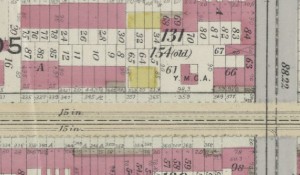
In late 1914, the YMCA on the Park Slope was planning a massive expansion.
Located at 359 Ninth Street since 1891, it had been apparent for years that the “Y” had outgrown its 2-story brick and mortar home, and that something would have to be done to find or build more space.
The Y opted for the latter – purchasing the buildings next to their clubhouse on Ninth Street, specifically the attached wood frame houses at No.’s 351, 353, and 355 Ninth Street (above).
They would tear down all of them – including the brownstone mansion next to their clubhouse – and contract a 20th century behemoth of a building that would support all of the Y’s expanding programs – boys’ swimming, public speaking, mandolin lessons, dramatic and outing clubs, billiard and bowling prize tournaments, and Bible classes, amongst others.
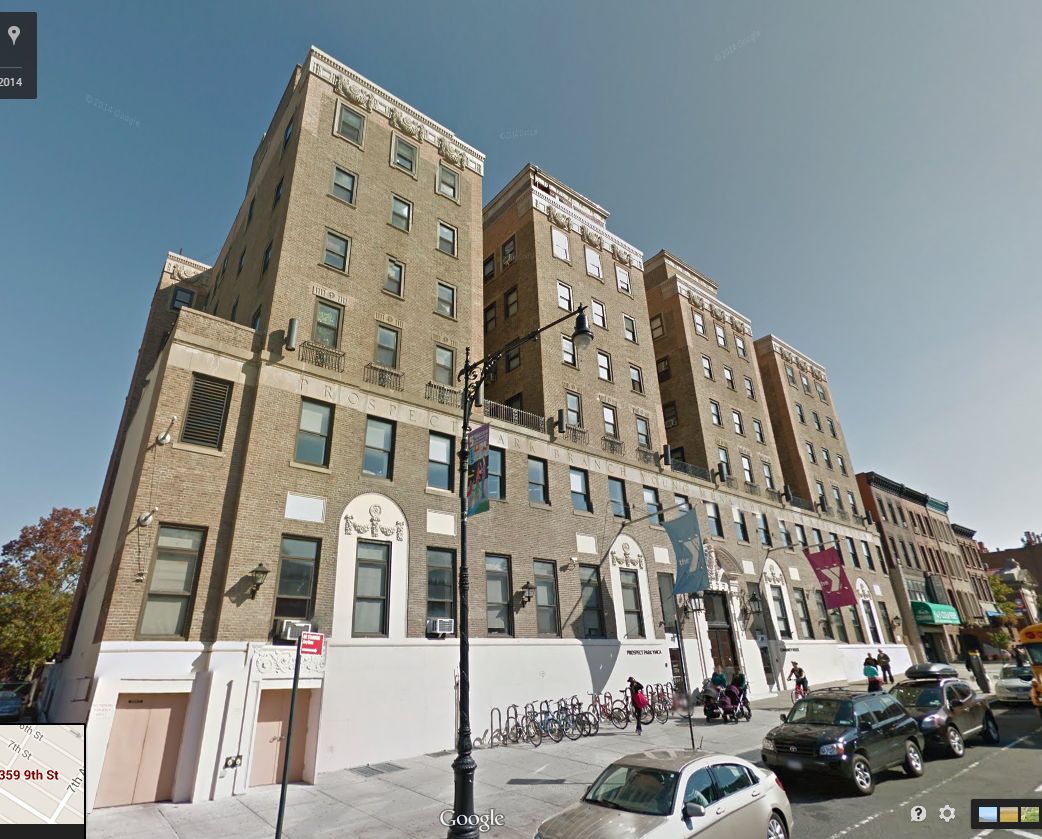
It was felt by those on the Y’s Committee of Management that even more good could be done for even more men and boys, if these old landmarks were cleared away. So a building fund was established to pay for the construction of such a building that would additionally hold a dormitory for “about 150 men and boys.”
Although the committee members hoped to break ground in 1915, it would take eight more years before the institution had raised enough funds to break ground.
And it would be another two more years before the work of demolishing the old Y (and the other “landmark” buildings) and construction of the replacement clubhouse could begin.
Finally, when early 1927 arrived, the monolithic structure was completed and opened to the men and boys of Park Slope.
Today, the wood houses that had occupied this spot, are just a memory – but their memory serves as a beacon to those interested in preserving the remaining wooden structures around us.
———————————————————————————————————————–
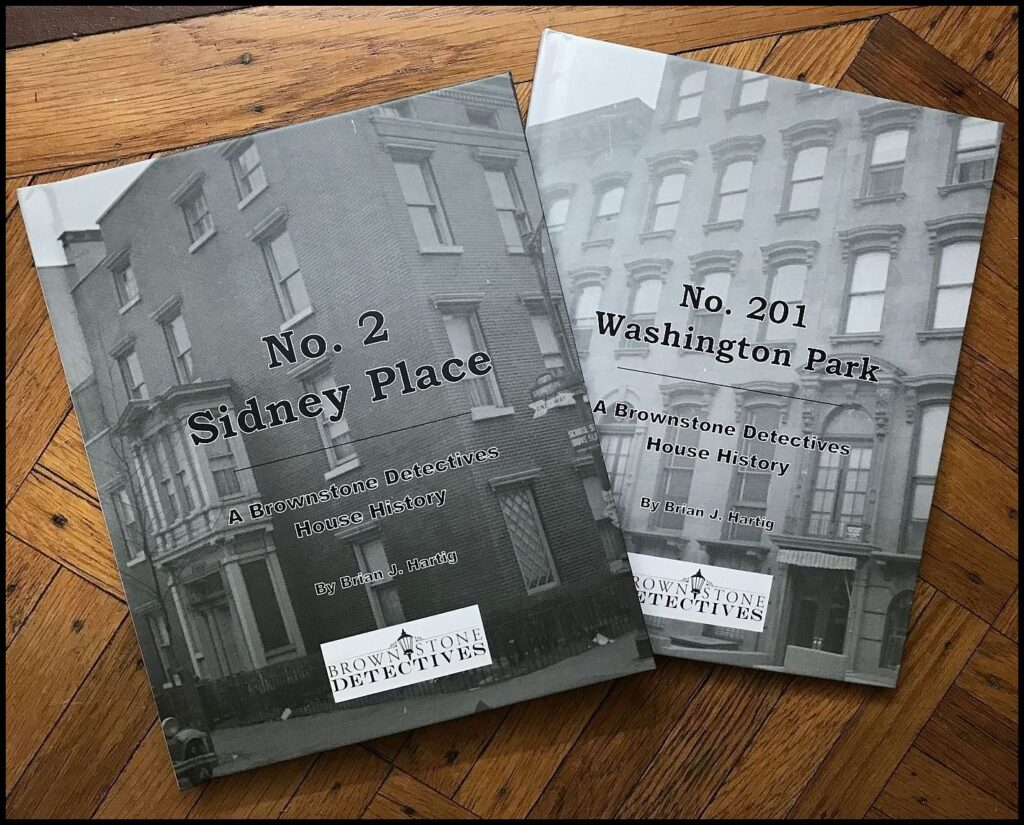 Brownstone Detectives is an historic property research agency. Our mission is to document and save the histories of our clients’ homes. From our research, we produce our celebrated House History Books and House History Reports. Contact us today to begin discovering the history of your home.
Brownstone Detectives is an historic property research agency. Our mission is to document and save the histories of our clients’ homes. From our research, we produce our celebrated House History Books and House History Reports. Contact us today to begin discovering the history of your home.